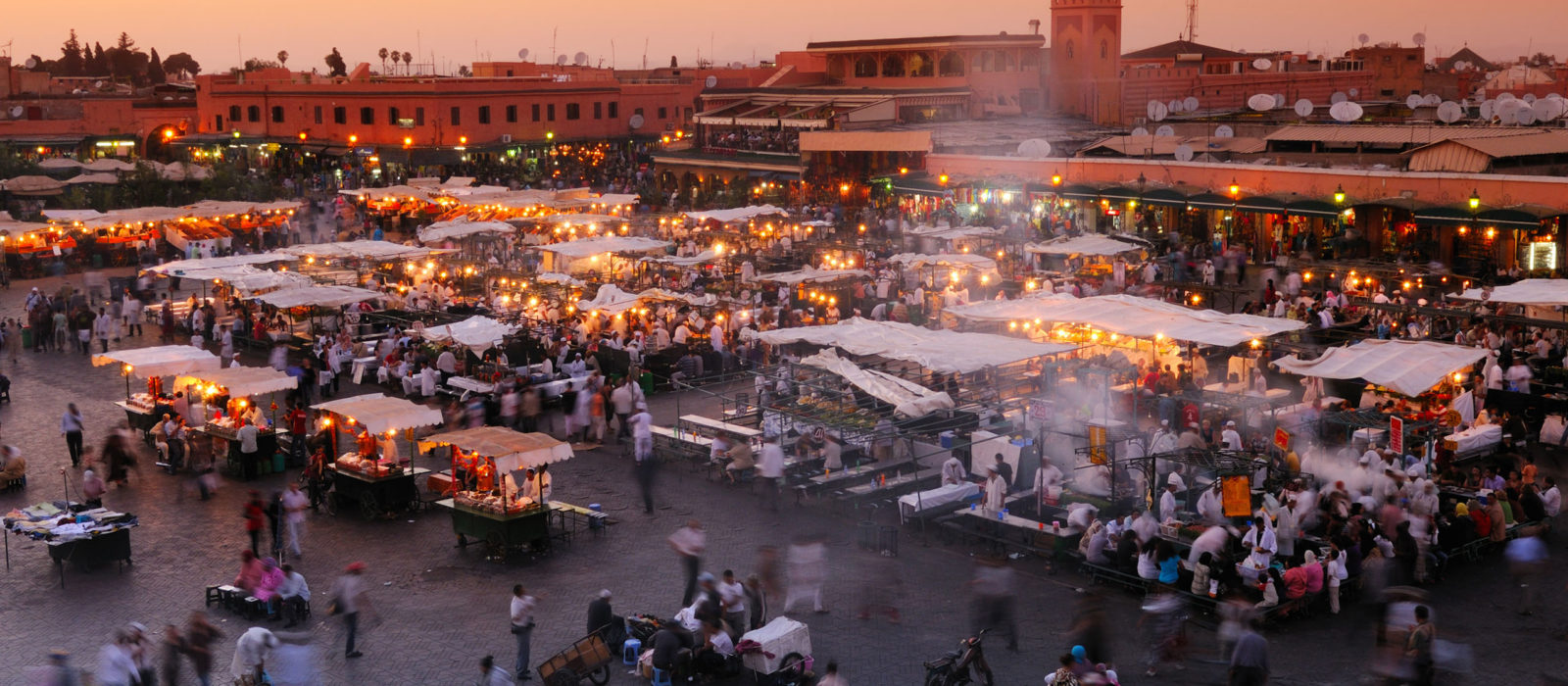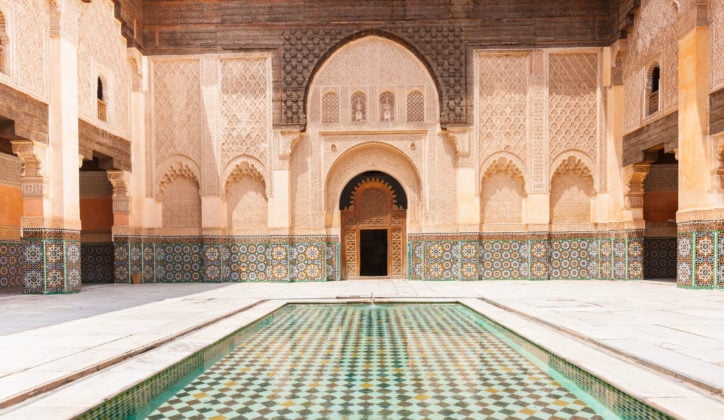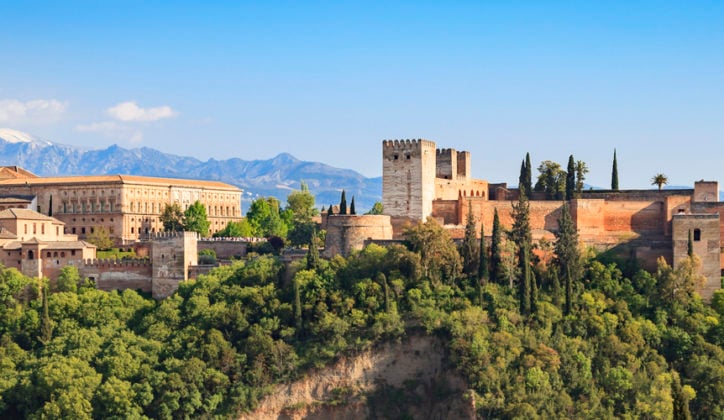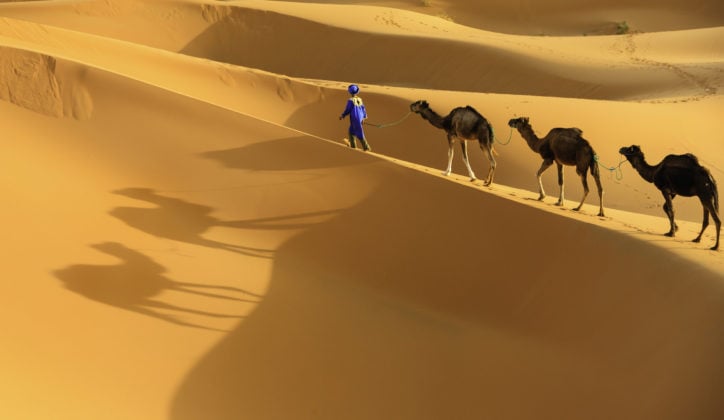Published on: December 10th, 2018
Last modified: December 14th, 2023
Morocco is a gateway between Europe and Africa, and one of the most inspiring countries in the world.
A blend of cultures, tastes and landscapes, there is a wealth of things to discover in this romantic land.
From lunching with locals in Moulay Idriss to trekking through the High Atlas Mountains, there are so many ways you can discover this country in the most authentic way. This is our guide to luxury travel to Morocco.

Why travel to Morocco?
Cosmopolitan cities
Today, modern Morocco is a vibrant fusion of incredible landscapes, spiritual hubs and cosmopolitan cities. On the northern coast, the country’s northernmost city of Tangier is a place steeped in history. Known as ‘The Door of Africa,’ this port town has changed hands dozens of times, and at one point even became an international hub of espionage. Nowadays, the eclectic city is a medley of Muslim, Christian and Jewish cultures. A favoured haunt for creatives, Tangier of the past attracted painters such as Delacroix and Matisse, as well as Beat writers Jack Kerouac, William S. Burroughs and Allen Ginsberg. Today, creativity lives on in the old Kasbah, through bustling marketplaces and informal dining spots.
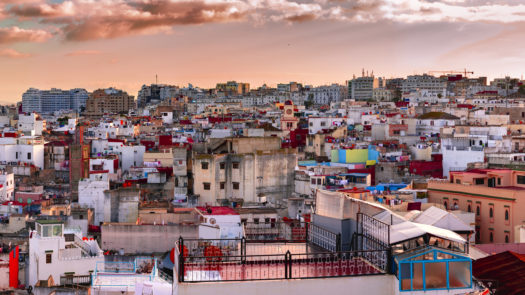
Casablanca, Morocco’s most populous city, is also home to a burgeoning arts scene. The city streets are lined with an array of interesting architecture, ranging from Art Deco to more modern styles. With parts of the city now UNESCO World Heritage Sites, Casablanca is a great place to get closer to Moroccan art and culture. It’s a haven for foodies too, with a wealth of great restaurants and traditional farmers markets. Capital city Rabat is also a charming city, home to a central beach, traditional kasbah and an enchanting walled medina.
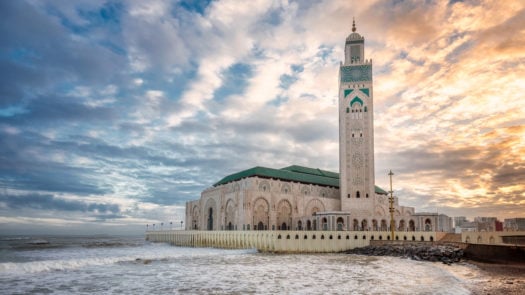
Cultural hubs
The eclectic city of Marrakech draws people from around the world to Morocco, and for good reason. Marrakech is surrounded by a medina of historic red walls, with imposing gates leading through to winding alleys. Here, Morocco’s creative scene really comes to life. Vibrant souks and artisan markets sell everything from fragrant spices to lamps and pottery. Bustling market square Jem el-Fnaa is the beating heart of the city, hosting storytellers, musicians and performers on a nightly basis. Other highlights include charming riads, opportunities to discover rich Berber culture and Yves Saint Laurent’s Jardin Majorelle.
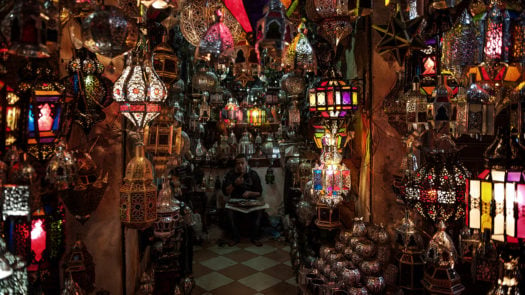
Morocco’s second largest city, Fes, is considered the country’s cultural and religious capital and it is easy to see why. The city is divided into three districts: Fes el Badi, Fes el Jdid and the Ville Nouvelle. With all three districts built between the 9th and 20th centuries, the streets of Fes are brimming with history. In Fes el Badi, donkeys and hand-pulled carts make you feel as though you’ve stepped back in time. Fes el Jdid (or ‘New Fez’) houses the vast Royal Palace, while the Ville Nouvelle is one of Fes’s most modern districts.
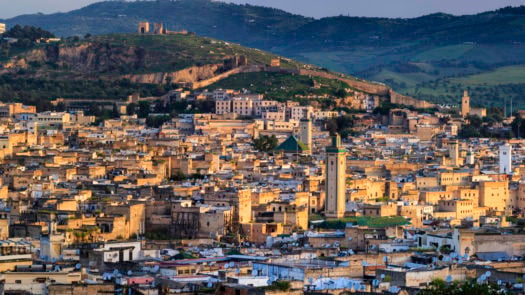
Dramatic landscapes
Aside from cosmopolitan cities and cultural centres, Morocco offers world-class landscapes. Spanning Algeria, Tunisia and Morocco, the Atlas Mountains are a rugged natural wonder filling the space between the fertile Mediterranean coast and the vast Sahara desert. The most dramatic section – the High Atlas – can be found in central Morocco. These awe-inspiring peaks include the astonishing Toubkal, which towers over Marrakech at an impressive 4,167 metres (13,671 feet).
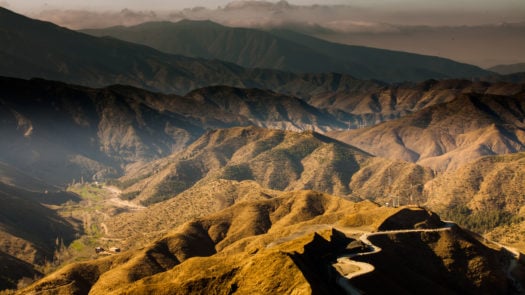
The world’s largest hot desert, the Sahara, also covers a substantial part of Morocco. Blanketing northern Africa from the Atlantic to the Red Sea, this dry land makes its way through eleven countries. Lying south of the High Atlas Mountains, Morocco’s part of the Sahara is extremely romantic, with seas of never-ending rolling golden sand dunes taking centre stage. Here, herds of camels are led by nomadic blue-scarfed Berbers, whose culture has survived here for over 4000 years.
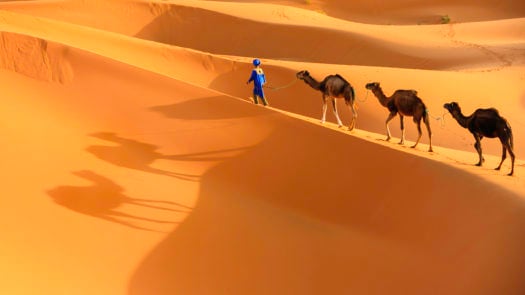
Beautiful coastline
Morocco’s coast is dotted with sleepy fishing towns and coastal lagoons. On the Atlantic coast, Essaouira is a laid-back port town just under three hours away from Marrakech. Once a cultural melting pot turned holiday destination for hippies, today Essaouira’s bohemian vibe lives on in inspiring galleries and boutiques. Sandy beaches extend in both directions from the town, and near perfect breezes make April to August perfect for wind and kite surfers. Any time from March to October is pleasant to visit Essaouira and discover its argan tree plantations, vineyards and stunning coastline.
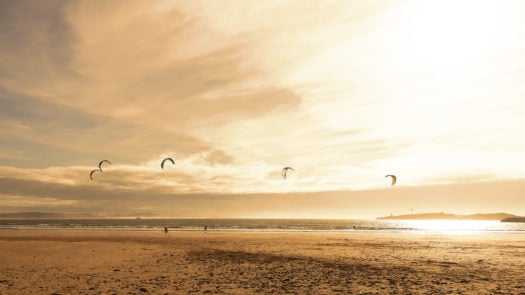
The peaceful seaside town of Oulidia lies just 200 kilometres north of Essaouira. Overlooking a coastal lagoon that is home to an assortment of migratory birds, Oulidia’s setting couldn’t be more idyllic. Golden sandy beaches surround the crescent-shaped lagoon where colourful fishing boats are dotted amongst the waves. Protected from the ocean, the lagoon is perfect for kayaking, swimming and canoeing.
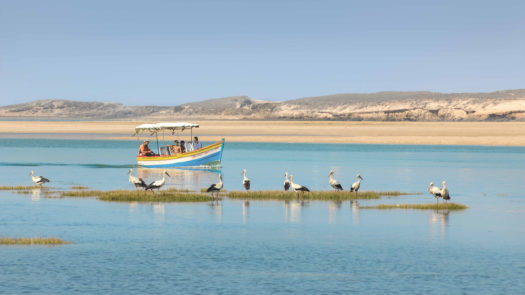
Understandably, the seafood is excellent here, with the calamari, lobster, shrimp and oysters considered the best in Morocco. There’s plenty to do in Oualidia – travellers can enjoy panoramic views of the coast from a ruined kasbah or explore the castle at El Jadida. While there’s plenty to do, part of the joy of visiting this coastal town is the opportunity to simply spend a few days relaxing.
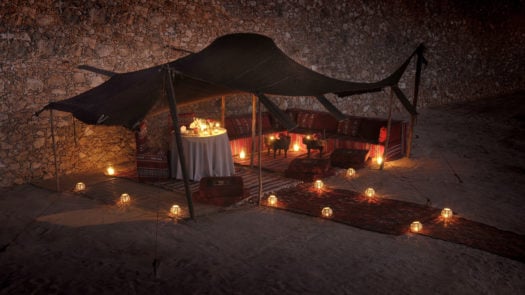

Where to go in Morocco
Moroccan Sahara
There are few experiences more magical than sleeping out under the stars in the heart of the Sahara desert. The camps here are all based on traditional Berber style, making for a truly authentic stay. A nomadic people who have preserved their own language and culture for over 4000 years, the Berber people have kept their traditions alive through Carthaginian, Roman, Arab and French empires. Enjoying these camps in private is a truly out of this world experience – travellers can go camel trekking during the golden hues of sunset, dine around a campfire or simply gaze at the starry night sky.
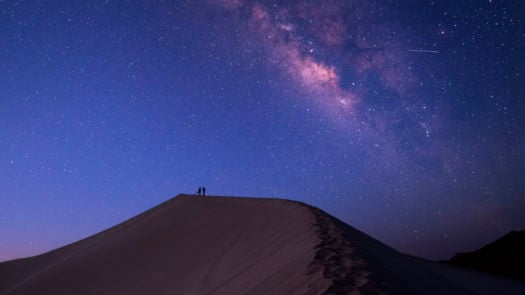
The best time to visit the Moroccan Sahara is during the slightly cooler months of October to May. In December and January, the temperatures can sometimes drop below freezing but camps provide you with plenty of cosy blankets to help you warm up. During the height of summer – from June to August – many camps close down, as temperatures are far too hot to be comfortable.
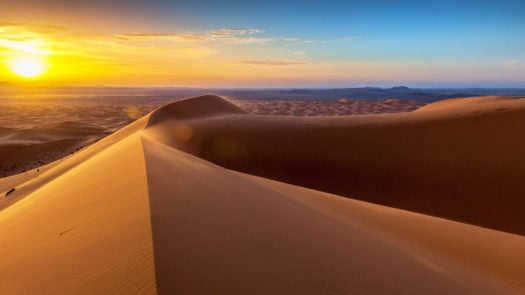
Marrakech
The atmospheric city of Marrakech is one of the main cities drawing travellers to Morocco. As well as bustling souks and markets, Marrakech is home to countless riads. Traditional and grand Moroccan houses set around courtyards, these riads have now taken on a new life as charming hotels and peaceful havens. The Gueliz part of the city houses the lavish El Badia, Bahia and Royal Palaces, which are each wonderful examples of Berber design and craft. Wandering your way through Marrakech’s winding alleyways with a private Jacada guide is an incredible way to explore hidden boutiques and art galleries just like the locals do.
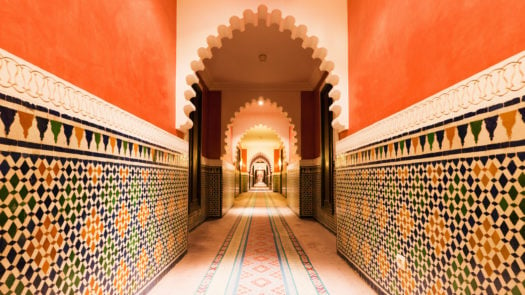
This cultural city is best discovered in Spring, from March to May, when days are sunny and fresh flowers are in bloom. Autumn (from September to November) is also a pleasant time to visit, as the blazing heat of summer has disappeared. Summer is best avoided, as temperatures can reach in excess of 30°C (86°F). Winter is also pleasant but pack layers, as cold temperatures at night can leave you feeling slightly chilly.
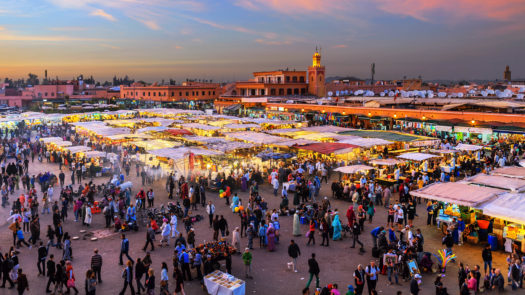
High Atlas Mountains
The High Atlas Mountains are a landscape like no other. In winter, snow capped peaks rise majestically over Marrakech, while in summer the mountains become rocky and rugged. Along winding roads, travellers can journey through green valleys dotted with mud-built Berber villages and wadis on the edge of the Sahara. Hikers of all levels can find something to suit their tastes here, from well worn trails to craggy peaks requiring crampons. From November to April, an otherwise arid landscape transforms into a ski resort as the snow falls. The High Atlas provide a refreshing escape from sweltering northern cities, and are a great stopping point on the journey from the cities to the desert.
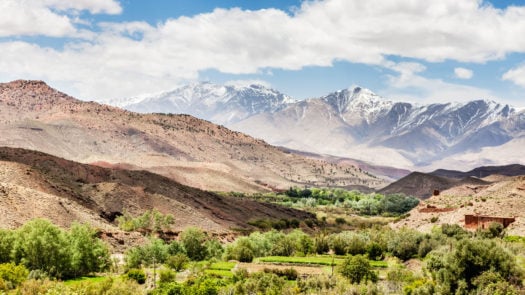
This rocky landscape can be enjoyed at any time of year, with each season offering different activities. For trekking, the spring and autumn months are the best, as mild weather makes it the best time for serious hiking. Summer and winter aren’t as well suited to trekking, as temperatures are extremely warm in summer and uncomfortably cold in winter. Of course, if it’s skiing you’re after, then visit between the colder months of January and February.
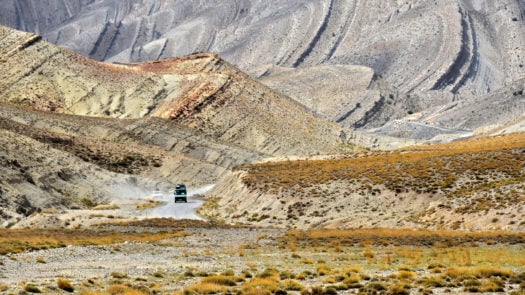

Where to stay in Morocco
Riads
Grand traditional houses set around central courtyards and gardens, riads have been a feature of Moroccan architecture for centuries. Riads are perfect for guests seeking privacy; the number of rooms in a riad is typically very small and windows tend to face inwards, to stay in keeping with the exclusive feel. In Essaouira and Fes, riads are one of the most popular types of accommodation, and with some of them offering unrivalled luxury, it’s easy to see why.
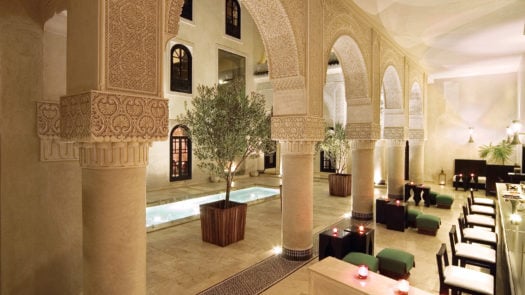
In Essaouira, the charming Villa Maroc is set in a fantastic location between the beach, harbour and medina. This riad suits all types of travellers, offering two family friendly apartments, quiet spots to read in, a lively bar, spa and roof terrace. In Fes, Riad Fes offers Relais & Châteaux luxury, Karawan Riad feels lavishly palatial and Palais Amani comes with its own cookery school.
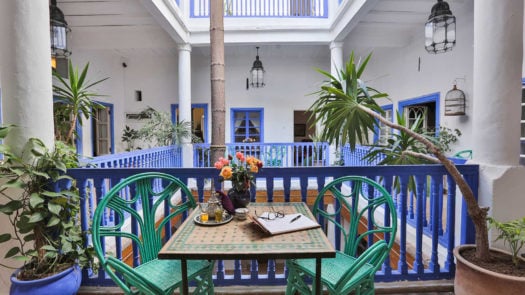
Kasbahs
Morocco’s kasbahs are similar to France’s chateaux, and make for excellent hotel conversions. These walled fortresses once functioned as homes of local leaders, and are typically located on isolated hillsides. Today, this means converted kasbahs have panoramic views over the Moroccan countryside.
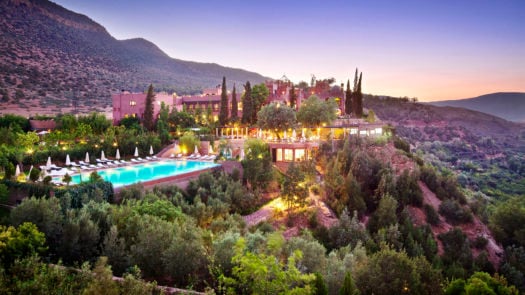
A favourite of Richard Branson, Kasbah Tamadot in the High Atlas Mountains is an expansive luxury retreat. The original kasbah building houses 15 original rooms, an indoor pool, spa, library, tented Asmoun Lounge and a stunning courtyard reflection pool. For an eco-friendly stay, the elegant Kasbah Bab Ourika is built in the traditional Berber way and heated using solar panels.
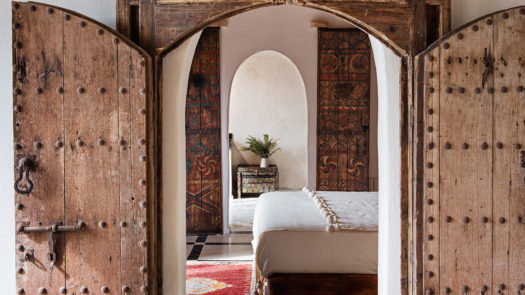
Berber camps
In the Moroccan Sahara, there is no better way to immerse yourself in the sand dune surroundings than by staying in a luxury tented camp. Styled on how the Berber people communally live, staying in one of these camps also gives travellers the opportunity to get a glimpse into local life. For honeymooners, Dar Ahlam Dune’s Camp is a romantic camp that is perfectly placed for an unforgettable night in the desert. Magical experiences on offer here include watching the sunset from atop a dune, walking barefoot along a path of lanterns or dining by a campfire under a starry night sky. For a more traditional feel, the Azalai Desert Camp and Merzouga are also great choices.
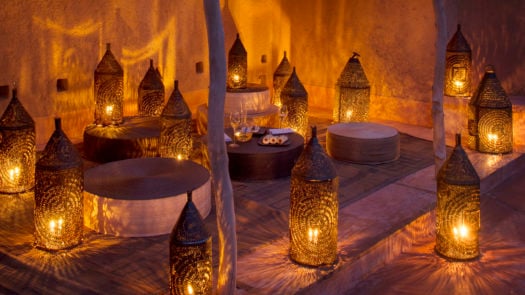

Jacada’s Morocco experiences
Culinary delights
Morocco is an artistic and creative country, and its cuisine is innovative and traditional all at once. Just outside Fes, Jacada travellers can get a taste of Morocco with a gourmet lunch at a private home in Moulay Idriss. Made with locally grown produce, this mezze lunch introduces travellers to various delicacies from up and down the country. In Marrakech, vibrant souks and markets are filled with fragrant spices and local delicacies.
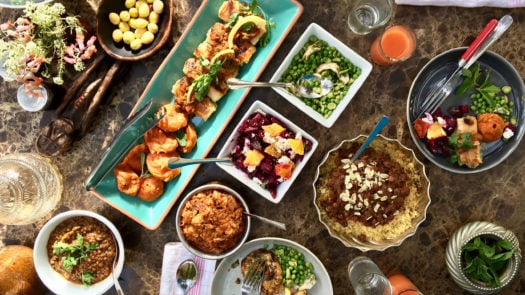
On a culinary tour of the Jemaa-el-Fnaa square, a local guide will awaken travellers senses to the tastes of the city. Stopping at the tastiest food stalls, visiting olive and nut souks and sampling local specialities is sure to satisfy even the most discerning of taste buds. As you head west to Essaouira from Marrakech, stopping off for a walk through organic vineyard Val d’Argan is a great way to discover local tastes. Some of the best biodynamic wines are produced in this region, and travellers can round off the day by indulging in a lunch paired with a wine tasting.
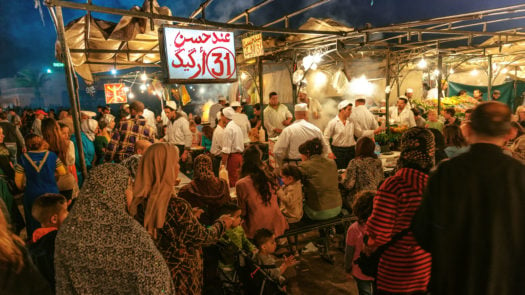
Exclusive escapes
The Moroccan Sahara is a magical place, and as you journey there, the drive doesn’t disappoint. Around five to six hours from the city of Skoura, the drive into the desert is one of the most striking scenes in Morocco. Initially mountainous, arid and barren, the landscape slowly transforms into vistas of undulating sand dunes the further you venture into the desert. Once you’re in the heart of the desert, you’ll find camel trains, nomads dressed in blue and blissfully isolated camps.
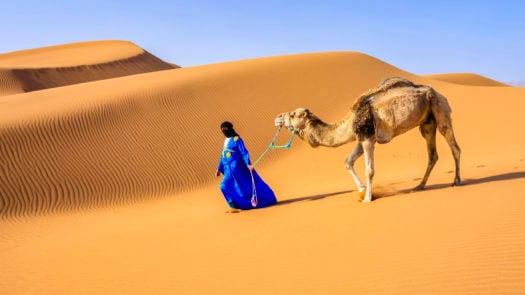
City tours
Morocco’s cosmopolitan cities are lined with diverse streets, and there’s no better way to explore them than on a walking tour with a local guide. In Tangier, discover the ‘Door of Africa’ by walking in the footsteps of the Beat Generation. From the Socco squares to the Hotel Continental, you’ll pass the American Legation Museum – the only US National Historic Landmark on foreign soil – and legendary libraries along the way. For an authentic Moroccan treat, travellers can then head to the picturesque Café Hafa to sip on Moroccan mint tea whilst looking out over panoramic sea views. Unchanged since opening in 1921, this emblematic café has remained a perennial stop for artists, writers and musicians.
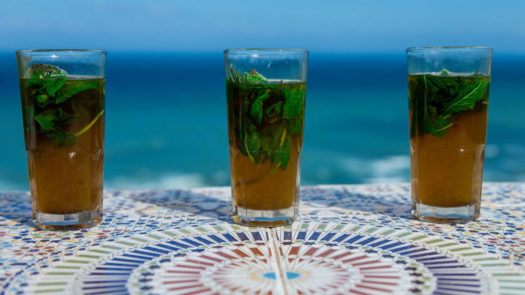
Hidden in the rugged Rif Mountains between Tangier and Fes, the blue city of Chefchaouen is one of the most picturesque cities in Morocco. The old kasbah dates back to the 15th century and the blue-washed winding alleyways are a melting pot of local culture and Andalusian heritage. A relaxing place to spend a day, you’ll find stalls selling unique handicrafts and pretty mosques as you wander through Chefchaouen.
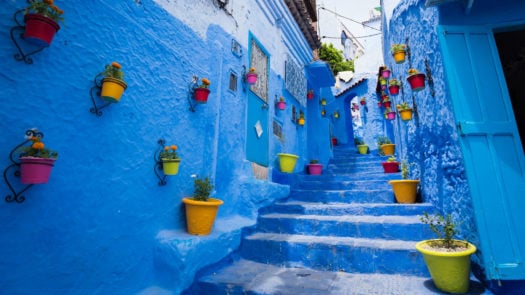
The streets of Morocco’s cultural and religious capital Fes are lined with an array of market stalls, selling everything from spices to traditional homewares. As Morocco’s ancient imperial capital, the city of Fes is today the most complete medieval city of the Islamic world. A guided walk through its incredible medina is the best way to explore this wonderful city. Accompanied by a local guide, you’ll be able to seek out historical highlights and traditional markets without the fear of getting lost amid the maze of streets.
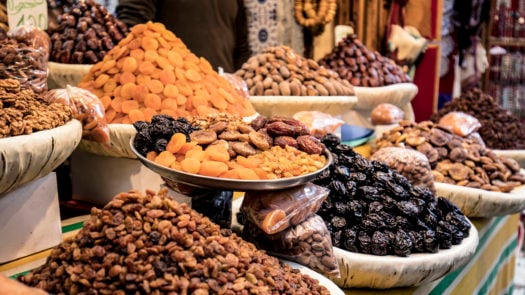
On a walking tour through the streets of Marrakech, a local guide will introduce you to the historical highlights of the medina. Now considered a UNESCO World Heritage Site, this medina is one of the most charming parts of Marrakech. The walls here house an eclectic mixture of bazaars, mosques and bustling squares, as well as landmarks including Bahia Palace, the Saadian tombs and the ever-present Koutoubia Mosque. For a more modern view of Marrakech, travellers can then visit the Yves Saint Laurent Museum and Jardin Majorelle to learn about Morocco’s burgeoning creative scene.
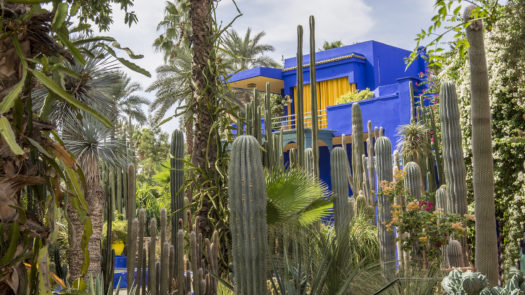
To get away from the hustle and bustle of Morocco’s major cities, laid-back fishing port Essaouira is a refreshing place to spend a couple of days. Once known as Mogador, this sleepy town took its name from the 18th century medina, with ‘souira’ meaning small fortress in Arabic. Walking through this historic medina alongside a local guide means travellers get an insider insight into the history behind the whitewashed walls, lively port and narrow tiled streets. To get closer to nature as well as the locals, travellers can round off this tour with a walk on the beach towards the naturally beautiful Sidi M’barek waterfalls.
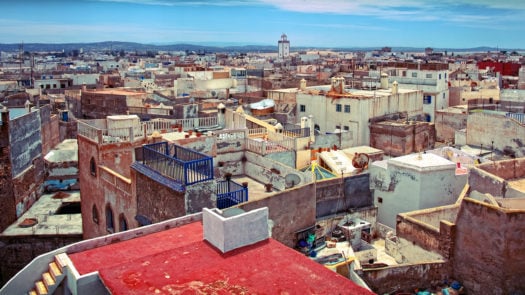
Discover Morocco like a local
Feeling inspired? Speak to one of our expert travel designers to discover how you can journey through Morocco in style.
